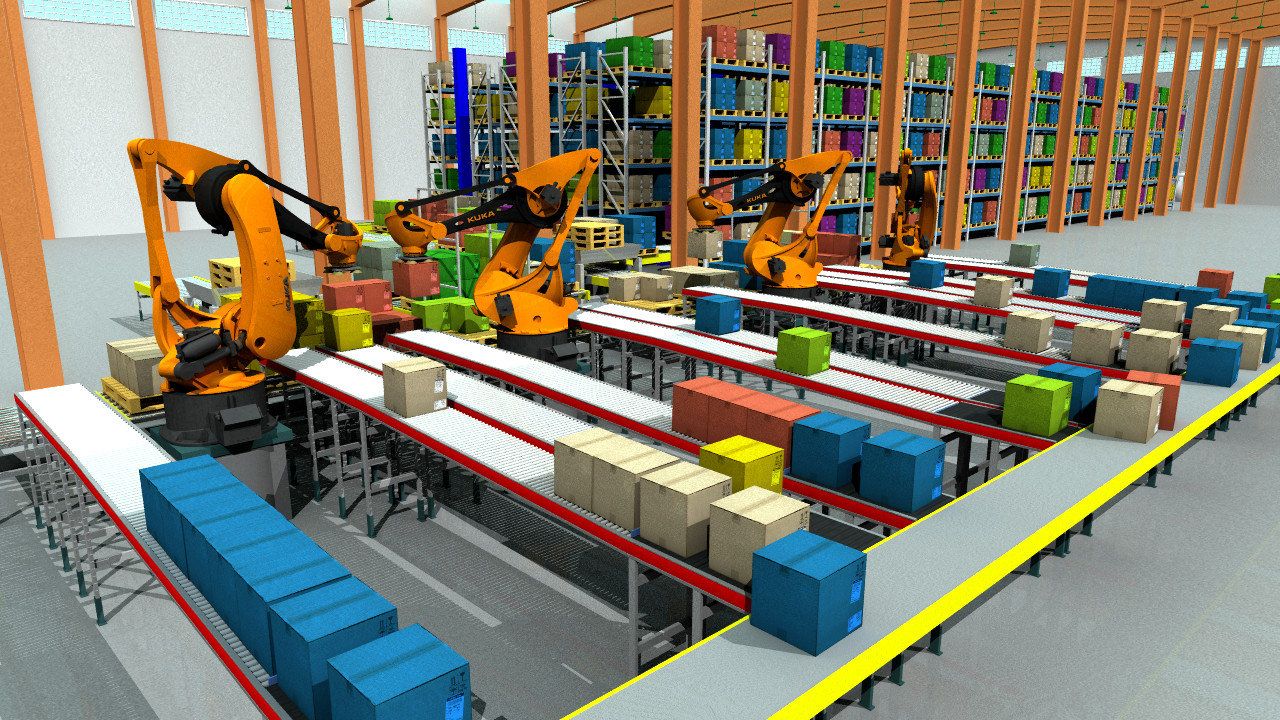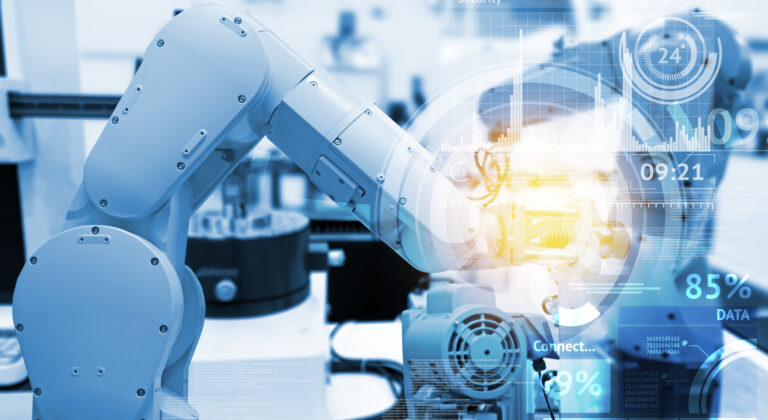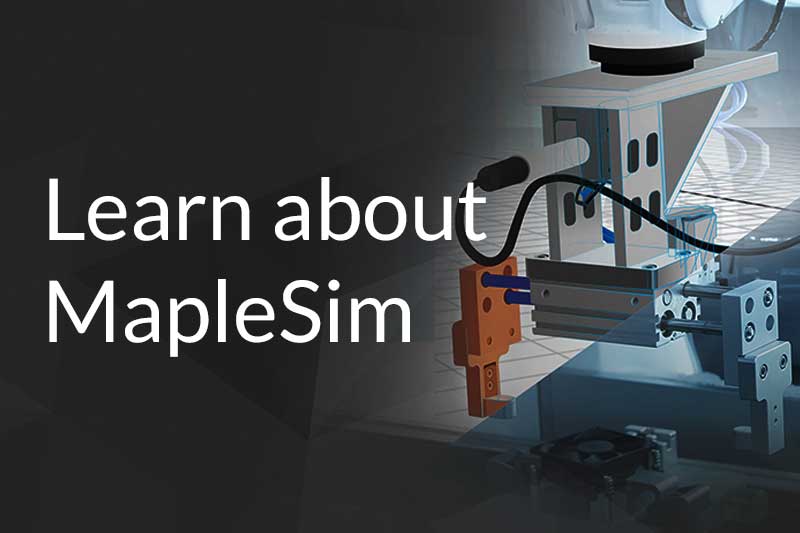
An Interview with Emulate3D, a Rockwell Automation company
In the ever-evolving world of automation machinery, model-based technologies are finding their way into more and more aspects of design and production. For some, these models form the basis of virtual commissioning techniques, allowing for earlier testing and validation of automated systems. By testing machine and process performance using simulation-based models, engineers can identify performance issues long before the physical equipment needs to be in place, removing an all-too-common bottleneck for automation engineers. One particular application of virtual commissioning is in the modeling of material handling for plant designs. Emulate3D, a Rockwell Automation company, specializes in creating tools for the modeling and simulation of material handling systems. I sat down with Ian McGregor, Director of Emulate3D, to learn more about virtual commissioning for material handling.
Your work at Emulate3D focuses on virtual commissioning, as applied to material handling and product flow. How would you describe these kinds of virtual commissioning models?
Ian: Virtual commissioning material handling models always bring together three, and sometimes four, distinct parts of the industrial environment that we address – the physical elements such as transfer equipment of various kinds, the logical operation part which is the control system, and the loads or products which are to be handled, sorted, or processed in some way by the mechanical system. The fourth element is the operator, as it is valid in some cases to test a virtual commissioning model with an appropriately trained operator, where that person would form a part of the real system by interacting in some way which has an effect on its cycle time or performance.
In order for the modeled system to be of use, the various components should replicate, as closely as is useful, the relevant aspects and the behavior of their actual counterparts. Accepting as a starting point that the control system is the real thing and the subject of the testing, it is then the role of the other modeled elements to provide the control system with inputs indistinguishable from those generated by reality, in response to changes in its outputs. To do this, the transfer and handling equipment must be able to respond realistically to control system output changes which may start and stop motors, or activate or stop movement of various kinds.
Loads and products carried on or transported by this equipment should react as real loads and products would, which may imply slipping, tipping, or interacting with each other in a recognizably physical way. To do this, modeled equipment has default or user-defined scripted behaviors which drive the state changes in response to control signals, and the build and run environment includes physical concepts such as hard surfaces, friction, and gravity to enable the realistic behavior of loads and products in movement.
Loads or products are introduced to the model as physical objects in a physical world, capable of being moved if there is sufficient friction between them and the surface beneath them, as happens with conveyors, or pushed, either by other loads in accumulation or by mechanical surfaces. Loads are created at one or more places within the model either by induction, as in a pull system, or by a timer, which would resemble more closely a push system. Their type, size, mass, and so on can be described in spreadsheets which are used to populate and feed the model.
Production floors can range widely in their complexity. How can engineers effectively create virtual commissioning models that can capture even large production systems?
Ian: Depending on the requirements of the customer and the practicalities of the system, virtual commissioning models of this type range from whole e-commerce fulfilment centers to single machines. Users will design models which perform the required purpose as responsively as possible, which often means breaking a large system down into more responsive and manageable operational parts, perhaps by one or more controllers, and this often understandably reflects the way the real system is designed.
As most users are specialized in the type of work they undertake, the elements they use as the basic building blocks of the majority of their models can be stored as reusable elements in catalogs; these can be organized as the user prefers by project or object type, for example. A wide array of generic material handling elements is supplied which may be used as-is or customized to reflect a particular manufacturer’s offering. CAD objects can be imported from a variety of industry-standard formats to supplement these catalogs, and equipment behaviors can be programmed in. Emulate3D technology provides a flexible and open framework which enables users to improve their workflow and reduce the time it takes to build and run controls testing models.
What kinds of problems can customers solve using virtual commissioning for material handling? And what are some steps customers need to take for adopting this technology?
Ian: Virtual commissioning models enable users to test their control systems exhaustively, under a range of realistic and repeatable operating scenarios. By virtualizing the logical verification of control systems you solve many problems associated with on-site automation system commissioning. On-site controls testing can’t be carried out until the system is built, which places it at the end of the project’s critical path, just before factory acceptance testing and handover. In the best of cases this is a vulnerable position, as any lateness and delay in any previous part of the processes on the critical path will also negatively impact the commissioning and testing start time.
The time needed to test and debug a complex system is hard to predict, and this only adds to the difficulty of costing and scheduling an automation project. Testing with actual product is fraught with uncertainty, and control errors can easily lead to extensive and time consuming clean-ups or urgent and costly equipment repairs. Carrying out the most unpredictable and variable part of system commissioning at the end of the project’s critical path, with an anxious end user watching closely and impatiently for you to declare it ready for factory acceptance testing – this is truly the stuff of industrial nightmares.
So, if a customer was using virtual commissioning models, when could they begin testing their control systems?
Ian: Taking the logical verification of the controls off the project’s critical path means it can begin as soon as the project is defined and the controls have been created, so testing can be carried out in parallel with the system build and installation. Testing no longer has to take place on-site, where conditions are rarely ideal for the task, and interruptions are frequent. If virtual testing is constrained to running in real time due to the real time nature of control systems, at least it can be carried out in several instances simultaneously by running it on multiple computers. This further parallelizes the task and reduces the time to completion.
On-site testing is reduced to a series of checkbox tests, and the time variability associated with full on-site testing is eliminated. Testing is safer in the virtual world, quicker and much less costly to fix when things go wrong, and eliminates product waste during testing. Virtual testing can continue as the real system is ramped and brought into production, so the system’s response to future changes can also be fully tested and debugged before implementing upgrades in real life.
Earlier controls testing seems like it can offer substantial benefits to automation projects. Is this something that you’d suggest to every engineer in this field?
Ian: Not all automation projects or machines benefit from virtual controls testing. Some may be a minor variation on an existing product; others may be linear and uncomplicated, but the tendency is that as the expectations of automation rise so the cost of virtual testing falls and the number of projects and machines which do benefit from this approach continues to grow. Wherever systems require flexibility and machines need to be adaptable to different product formats or flows, or there are parallel flows and merges which need to maintain certain performance levels under a range of different conditions, that’s where a virtual approach is both cost-effective and increasingly expected.
Costs are coming down as the technology spreads logically into CAD – the ability to use a client-specific toolbar to mark up the machine model within the CAD environment before pipelining it into the virtual commissioning engine, greatly simplifies and accelerates the process. Ongoing CAD modifications can be accommodated automatically without needing to recreate the model. Smarter tag browsers which detect and connect automatically between the modeled sensors, motors, and actioners and the control system IO enable users to move rapidly to the test and debug phase of the project.
Is there anything else you wanted to share?
Ian: Building virtual commissioning into your company workflow creates a standard approach using flexible tools which are easily customized to your specific requirements, and this generates consistently robust results in a predictable way. The implementation risk is significantly reduced, and the resulting machine or automated system is delivered to the end user on time and on budget. For these reasons, and many more, virtual commissioning is something we expect to see increasingly adopted across the automation industry in the months and years to come.

Ian McGregor is Global Emulate3D Business Development Manager with Rockwell Automation, and specialises in the application of dynamic digital twins to offline controls testing and throughput simulation in manufacturing, material and baggage handling. He has more than 30 years of industrial simulation and emulation experience and has lived and worked in England, France, Singapore, Japan, and the United States. He has a BSc Hons degree in Mechanical, Aeronautical, and Production Engineering from Kingston Polytechnic, UK, a Diplome d’Ingenieur in Applied Computing from the Universite de Technologie de Compiegne, France, and a Masters degree in Computer Integrated Manufacturing from the Cranfield Institute of Technology in the UK. In 2005 he co-founded Emulate3D to develop a better framework for simulation and emulation, and in 2019 Emulate3D was acquired by Rockwell Automation to reinforce their digital solutions offering.







